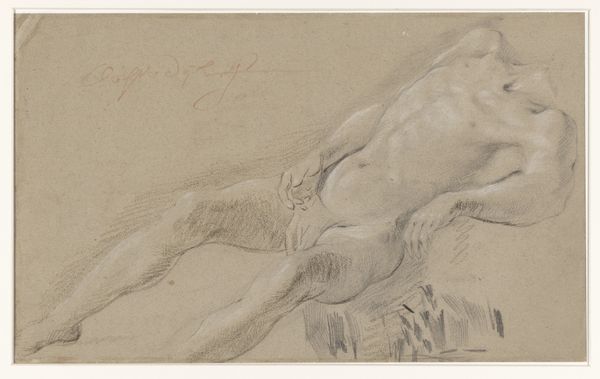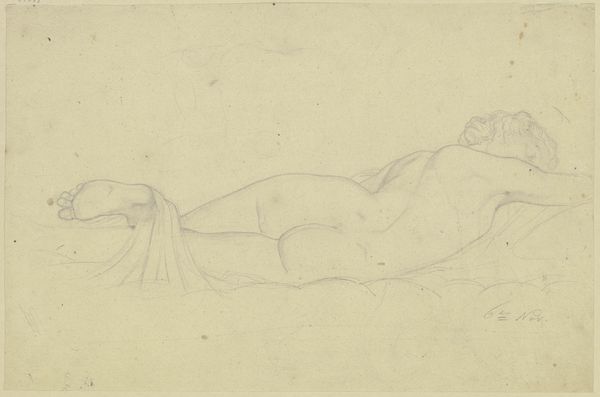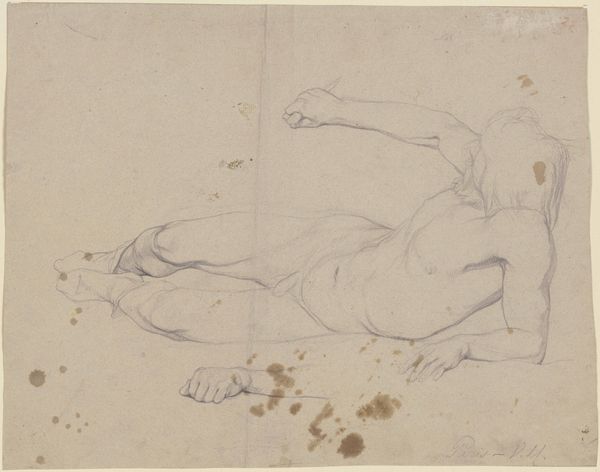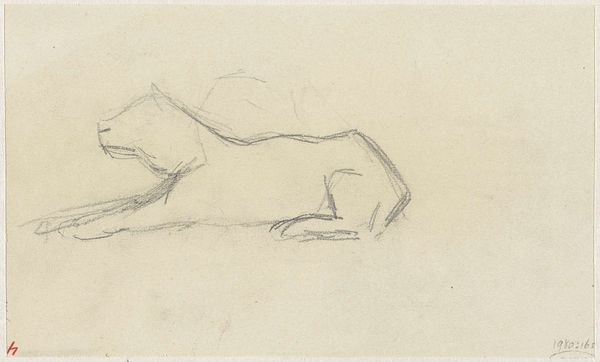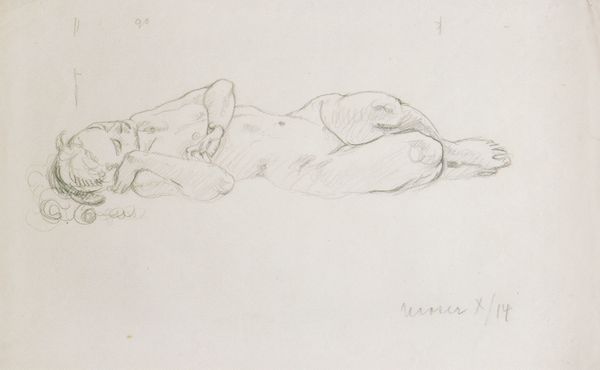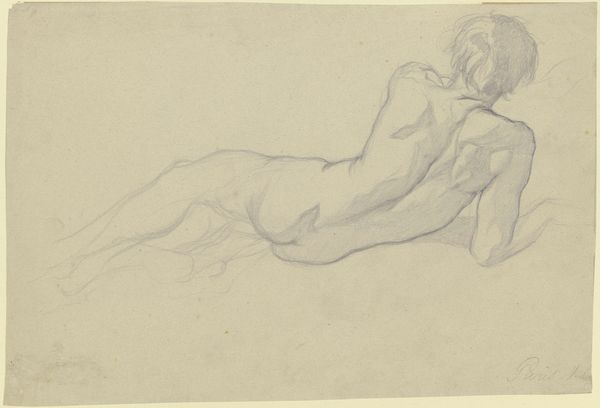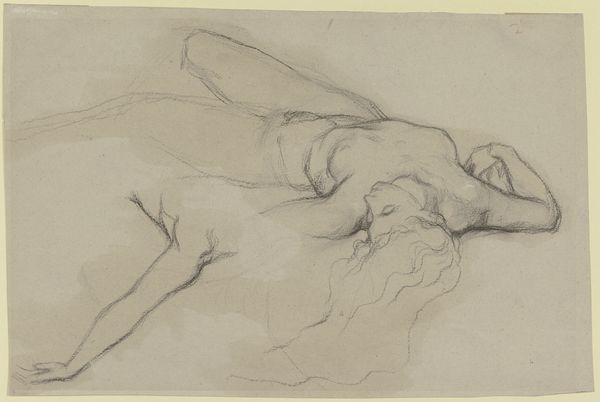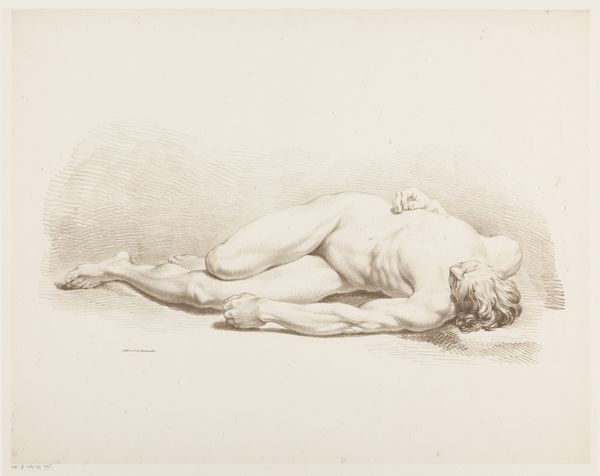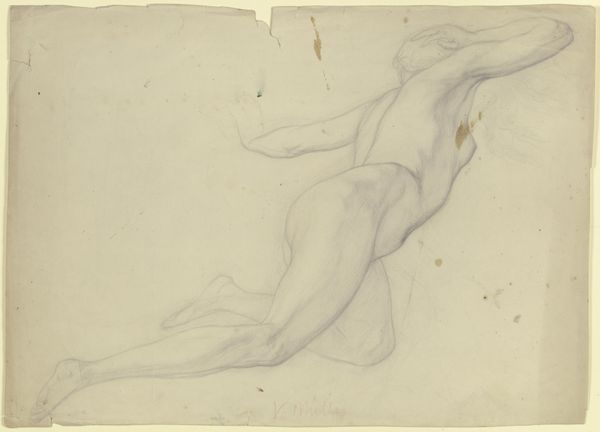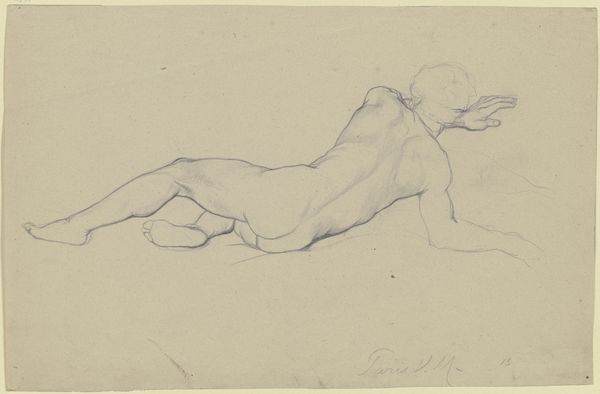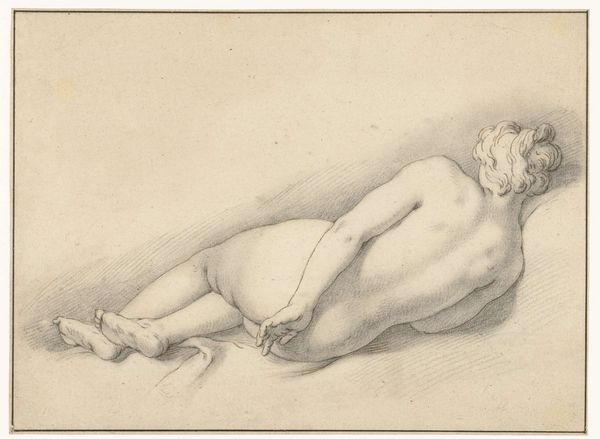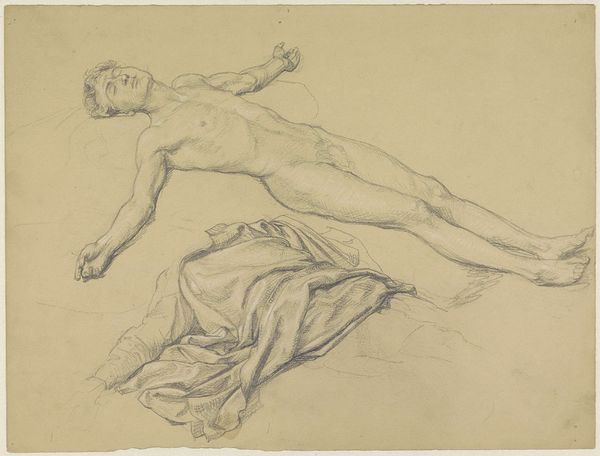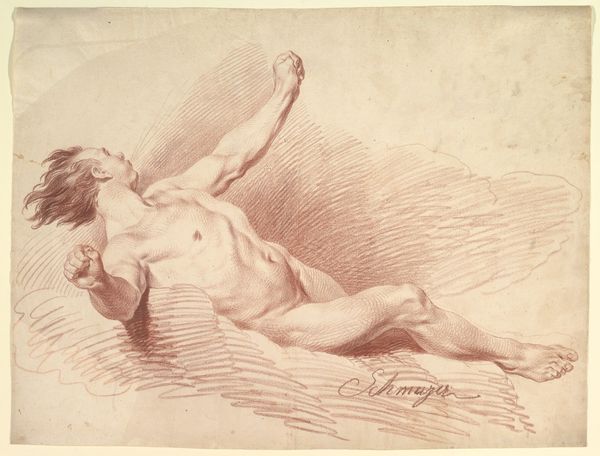
drawing, pencil
#
portrait
#
pencil drawn
#
drawing
#
pencil sketch
#
charcoal drawing
#
figuration
#
pencil drawing
#
pencil
#
portrait drawing
#
nude
Dimensions: height 177 mm, width 313 mm
Copyright: Rijks Museum: Open Domain
Curator: Before us is “Vooroverliggende naakte vrouw,” or “Reclining Nude Woman,” a 1922 pencil drawing by Huib Luns, housed here at the Rijksmuseum. Editor: There's an incredible delicacy to this. The soft hatching, the way the light seems to fall almost hesitantly. It's a surprisingly tender image, especially given the subject matter. Curator: Well, it's interesting you say that. Consider the era; 1922, just after the first World War. Artists were grappling with representations of the body, often in the context of trauma and changing social mores. Luns, known for his society portraits, engages with the nude form here, but within certain accepted parameters. It's a "safe" nude in a way, wouldn't you agree? Editor: Safe how? Look at the sheer labor in those layered pencil strokes. It’s not simply sketching a figure; he’s building the form from the ground up, imbuing the drawing with materiality, like sculptural modeling. You can see the dedication to the craft in how he coaxes volume and texture from what’s just graphite and paper. Curator: Yes, I grant you the mastery of craft, certainly. But I am struck more by the overall social and cultural placement of a male artist representing a female nude, especially the idea of idealized beauty and the societal expectations and performance linked with female figures through art history. Luns gives the viewer the female body but from an extremely careful perspective. Editor: Perhaps. But shouldn’t we also appreciate the hand and the tool in creating a powerful intimacy here? It almost looks as though she is comforting herself, an unusual interpretation that stands apart from so many paintings and drawings that feel distant, overly pristine. Curator: A good point; and maybe in that sense it offers something that some paintings do not! Considering how Luns would navigate the Dutch art scene in the years that followed, one starts to wonder how that decision to reveal an emotionality shaped perceptions of him. Editor: Precisely, these nuanced graphite marks contain complexities that a quick judgment would miss, wouldn't you agree?
Comments
No comments
Be the first to comment and join the conversation on the ultimate creative platform.
